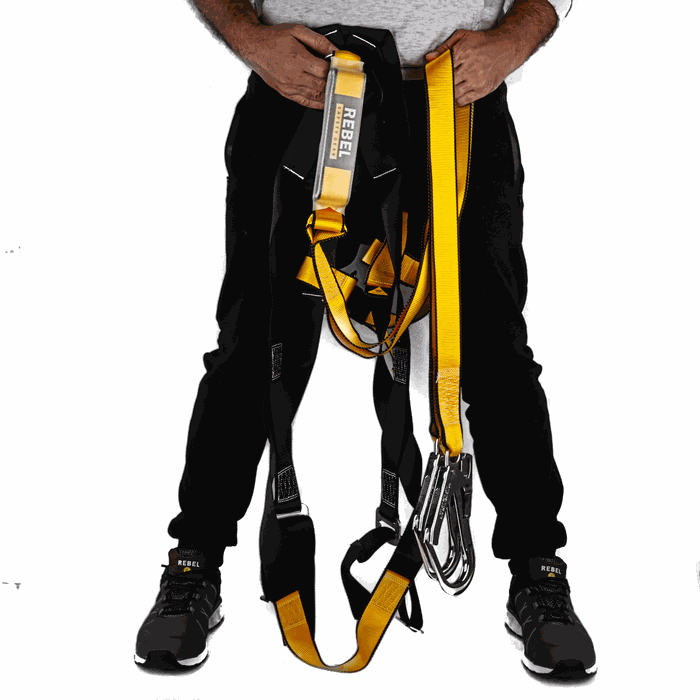Fall protection is essential when working at height. It is the difference between life and death. In South Africa, 14% of fatalities are from falling at heights, and this is why it is vital to have the correct safety equipment and training when working at height. There are significant differences between the equipment requirements for sport and workplace safety applications; it’s always helpful to understand why some equipment is best applied to one situation but never applied to another one
The differences in equipment are related to the type of fall that a worker at height would experience versus the kind of fall that a rock climber at height would face. Rock climbers face different obstacles because the environment is different. Climbers have to find a suitable anchorage location, use a waist body harness, and attach connectors -- ropes and carabiners to their anchorage system. In the workplace, fall protection is different. It is recommended you have an anchorage, a full-body harness, a connector, and a deceleration device to have a complete Personal Fall Arrest System.
In climbing, most people use a waist body harness. The waist harness works better because climbers do not have to carry a lot of equipment, unlike industrial workers. Climbers need the freedom to move as they climb. When rock climbers are scaling a wall, they use their hands and feet as contact points against it. For this reason, rock climbers have a better sense of control and stability while navigating heights. A rock-climbing harness only goes around the waist and legs. This type of harness is suitable for climbers because they can fall at various angles. If a climber were to fall from any angle while wearing a full-body harness, a full-body harness would put the climber at a higher risk for neck and spinal injuries.
In an industrial setting, you need a full-body harness because your only point of contact is your feet most of the time. When working at height, you carry equipment, or you are at height to perform a particular task. The full-body harness offers more balance. Workplace fall protection harnesses are full-body harnesses with a dorsal or sternal D-ring attachment area. The D-Rings are placed in those areas because workers generally have vertical falls, and putting them in a harness with an anchorage connection in that area keeps the worker upright. 
The deceleration devices are also different. There is a considerable difference between an acceptable device for fall arrest in the workplace and rock climbing. A rip stitch lanyard or a self-retracting lanyard are used to arrest falls in the workplace. These are preferred for the workplace because they provide the most controlled and immediate arrest of downward movement. A dynamic (or semi-stretchy) rope is the deceleration device in rock climbing. Rock climbers use ropes because they need to connect to more anchorage points as they are moving along a rock face. When workers use fall protection at their jobs, they are tied off to either a specific anchorage point or their anchorage is following them along with an overhead track system. The rock climber needs the rope because they will be covering various distances during their climbing route with anchorages that they will tie onto as they progress on the wall.
So, can you use your climbing harness at work? It is better not to. A fall protection harness is designed with the specific purpose of protecting you from injuries during industrial work; a climbing harness is not.
If you are unsure what devices to use, you can contact the FTS Safety Group at [email protected]. Alternatively, you can browse through our catalogue of Fall Arrest Equipment. FTS Safety provides a range of free information and resources for safety professionals with the aim of improving South Africa’s safety culture.